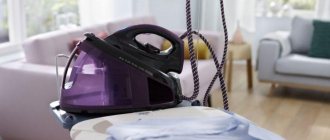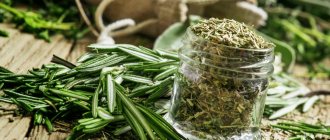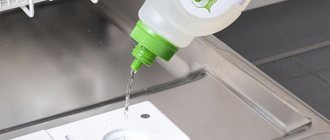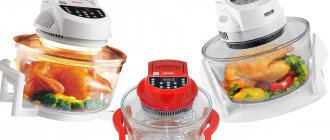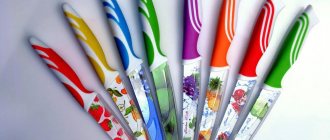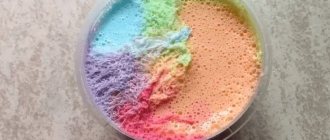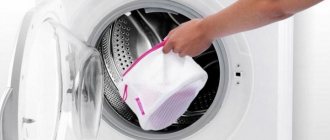In this article we will look at what and how to properly sharpen a knife at home, and also learn about the secrets of maintaining its sharpness.
Any knife, even a well-made and high-quality knife, becomes dull over time and ceases to be as sharp as in the first days after purchase. The cutting coating on the knife blade wears off after several years of use, which causes a lot of inconvenience. And a blunt object can cause injuries and cuts, because it slips much more often. Therefore, in this material you will learn how to reliably and quickly sharpen a knife yourself.
Leave the knives alone!
For some this will be a revelation, but there are knives whose blades cannot be sharpened , otherwise they will be damaged forever! These include:
- Knives with a serrated blade , or serrated knives. Outwardly they resemble a saw. But they differ from carpentry tools in that the shape of their sharpening is asymmetrical relative to the blade. Serrators can be located along the entire length or on some segment (half-serrators). You can sharpen them, but this requires special equipment and skills that the home master does not possess. Conventional double-sided regrinding destroys them.
- Knives with branded coating . For example, the company Zwilling JA Henckels produces TwinStar Plus knives. A unique composition is applied to their cutting part, thanks to which wear resistance increases many times over. And during the turning process, the protective coating is erased.
Scope of application
The fruitfulness of a blade with a serrated blade is definitely quite high. With such a knife you can easily cut meat; for such purposes, some manufacturers specially produce knives and position them specifically for kitchen work.
Hiking, hunting and fishing are also quite often not complete without it. Convenient for cleaning fish and cutting carcasses. It is widely used in the field of sports tourism and diving.
This is explained by the fact that such sharpening of the blade can easily cut ropes, ropes, etc. When caught in a net underwater, a diver can easily cut it.
Quite often, employees of the Ministry of Emergency Situations and other rescue services are equipped with such blades. The handle is made of special plastic, and the blades of some models have a crescent shape. Even manufacturers have made a special line called “sling cutters”.
Rescue knife with serrated sharpening.
And they don’t stop there, they produce special knives and characterize them as a survival knife. Folding cases with this sharpening are also produced. Quite a wide range of applications, popularized by the serrated blade.
Edit or sharpen?
Before you get started, it's worth finding out what kind of maintenance your cutting edge needs.
At home, you have two ways to make a knife sharp:
- If the knife is slightly dull, edit it .
- If the blade has not been serviced for a long time or is damaged, sharpen it - remove excess metal from the sides of the cutting edge.
A worn knife with severe damage to the blade - chips, chips, bends - needs professional repair. But it is quite difficult to do it at home, and you will probably have to contact a workshop.
Design Features
Not a single knife with a straight blade can compare with a bread knife if the task is to cut a freshly baked loaf with a crispy crust and airy pulp, maintain the structure of the pulp and not crumble the product itself. The secret is in the sharp teeth - in a professional bread knife they are large or medium, the sharpening is wavy or serrated. Externally, the cutting edge resembles a miniature construction saw, but the teeth are located on the same straight line. This tool has other differences from more universal models:
- The lowered tip is in line with the cutting edge. There is no need for the piercing part of such a knife, and besides, it has quite sharp teeth on the blade.
- Large - The length of the blade should be longer than the loaf itself to best handle slicing and have enough "span".
- The presence of a rest for the index finger (at the base of the blade). This is necessary to prevent cuts during operation.
Stocking up on tools
To sharpen a knife yourself, you will need the following tools:
- Musat (steel) is used for straightening . It can be made of solid steel, ceramics, or have diamond coating. In shape it resembles a file with an oval or round cross-section of the working part. Metal dusters are magnetized and attract metal dust. Ceramics are lighter, but more fragile. Musates are not used if the blade hardness is less than 50 units. HRC or more than 60 units. H.R.C. In the first case, they remove too much material, and in the second, their use will not bring results. Such files are used for knives with the correct geometry.
- Sharpening stones are the main tool for sharpening . They come in different degrees of grain. To restore the correct angle and shape of the cutting edge, the coarsest stones are used, the thinnest ones are used for straightening and finishing. The sharpening stone should be no shorter than the blade, but better – one and a half times longer. In extreme cases, when there is no stone at hand, sandpaper is used.
- Special straightening devices are devices made of several metal or ceramic disks that are partially nested one inside the other. They are convenient because they do not require professional skills and are completely safe. They can quickly remove burrs on a knife, which makes it sharper, but at the same time dulls just as quickly.
Read also: Caring for a spray foam gun
What grit size is needed for sharpening knives?
When sharpening blades, special stones are used. Their surface is an abrasive consisting of grains of different sizes. The grain size of the stone depends on this indicator. Devices for adding spice are divided into the following groups:
- the most coarse-grained (especially coarse material);
- regular coarse-grained;
- medium grain;
- fine-grained (delicate abrasive);
- micro-grained (material of increased fineness).
How to sharpen a knife correctly? A good master knows that using only one type of stone is ineffective. According to the rules, sharpening is performed alternately, moving from coarse-grained and rough stones to delicate, thin stones.
Ways to sharpen a knife
Musat
First edit:
- Musat is rested with his end on the table.
- The blade is passed along it with medium pressure, maintaining an angle of 20–25° to the surface.
Second edit:
- Musat is kept suspended.
- Use a knife to “attack” the file at an angle of 45°.
To sharpen it, it is enough to make 4–5 movements in both directions . To remove metal particles from the surface of the musat, wipe it with a damp cloth.
On the stone
- The sharpening stone is immersed in water for a while or simply wetted. Place it on a thin cloth or a sheet of paper so as not to scratch the countertop.
- The knife is taken by the handle with one hand, and the other is placed on the blade.
- Place it towards the stone at an angle of 20–25 degrees or greater (depending on the purpose of the knife).
- Smoothly, evenly, with medium pressure, move the cutting edge forward along a semicircular path, as if cutting off an invisible film from the surface of the stone. The direction of movement must be perpendicular to the cutting edge. At the end of the bar they reach the tip of the knife. The movement is repeated for each side.
- The blade is processed until a uniform burr appears along its entire length. You cannot sharpen only those parts where there is no burr - this will lead to premature wear.
- After sharpening, grinding is carried out, for which stone is also used, but with minimal grain size. Actions and movements - as described above.
- If the knife becomes dirty, wash it with water.
- It takes 5–7 minutes to work on one side.
- To simplify the task and not “fill up” the cutting edge, you can paint over it with a marker. After several cycles, evaluate the condition of the painted part: it should wear off evenly.
Sharpener
At home, you can sharpen a knife using a machine . It is especially convenient if you use many knives with different angles in the kitchen. To restore sharpness, just turn on the device, insert the knife into the slot, and move it back and forth several times.
Pros and cons of the blade
As mentioned above, it becomes quite difficult to name the pros and cons of such sharpening. Some manufacturers don't have problems in a certain area, but some do. Therefore, it is quite difficult to give a definite answer. All of the examples given should not be applied specifically to all blades.
In general, a serrated knife is highly valued in the kitchen, but it uses a wave-like sharpening throughout the blade. Cutting a fresh crispy loaf is not a problem with such a blade. But if you take a semi-serrater, the result may be different. This is a small example, once again proving that you cannot judge all knives at once.
Pros of sharpening
Professionals highlight more positive qualities than negative ones. Let's try to look at them more closely. Let's start with the pros:
- It is immediately worth noting the high productivity when cutting layered and fibrous materials;
- thanks to the bends of the serrator, the cutting surface relative to the blade itself increases;
- a knife with such sharpening keeps its sharpness for quite a long time, this will be useful for people who have gone far from civilization;
- defensive actions with a blade with such sharpening are quite effective;
- cutting certain materials does not require much effort;
- It is quite productive in the kitchen, great for cutting various foods and cleaning fish.
Here one should not lose sight of such an interesting point as the price of the knife and its manufacturer. If you buy a cheap fake, you may not have all these qualities, or they will only last for a couple of days.
Possible disadvantages
The word “possible” is very appropriate in this context. It was already said above that such qualities are not inherent in all blades with such sharpening. But we also need to say about the disadvantages:
- If the knife does become dull, it is quite difficult to sharpen it. This can be done by a special technician who has the necessary equipment;
- the edges of the cut will always be uneven, the trick with a sheet of paper will not work here;
- The blade requires careful care; after use, pieces of material may remain in the serrations.
Kitchen serrated knife.
Many sources also include the disadvantage that it will be difficult for left-handed people to wield such a blade. During the cut, the blade will move to the side. But now there are quite a lot of models on the market for people whose left hand is considered a working hand. So this should not be considered a disadvantage.
Make do with improvised means
It happens that you don’t have a special device at hand, but you still need to sharpen the knife, for example, on a hike or in the country. Here are some tips to help you get out of this situation .
- Any stone can be sharpened, including brick or concrete. The movements are the same as with traditional manual processing. The stone needs to be slightly moistened.
- By flipping a ceramic plate over, you can create a sharpening tool because ceramic is harder than metal. True, the process will take longer.
- You can use the bottom of a ceramic mug in the same way.
- If you don’t have ceramic dishes at home, take a glass glass and sharpen it on the edges.
Read also: Staples for a small stapler dimensions
- Surprisingly, you can sharpen a knife even with cardboard, although you will have to put in more effort.
- If you happen to have sandpaper on hand, feel free to use it.
- The option of sharpening a knife on a knife works well.
- And the last method, it is more suitable for finishing the sharpness of the knife. This method can be used to polish the knife after any sharpening. Use a genuine leather .
How to keep a knife sharp to avoid frequent sharpening of the blade?
Experienced masters are happy to share valuable advice with ordinary people. In this article, we have prepared the most important principles that will help keep your knife blade sharp for a long period of time.
- Never leave a knife dirty. Not only will the leftover food dry out and be difficult to wash off, but you will also damage the tip of the blade by friction.
- Never leave knives wet. Even the best quality knife that does not corrode can quickly become dull and become unusable.
- Also keep them away from damp places. And, preferably, in a place separate from all the dishes. This will help preserve its service life as long as possible.
- You need to wash the knife with cold water, and in general, try to contact it less often with hot materials. After all, high temperatures quickly corrode the blade in the literal sense of the word.
- Do not use a knife to cut all objects on any surface. This will have a bad effect on the very edge of the sharpened corner, and it will quickly become dull. Before and in general, you cannot cut wires with a kitchen knife - there are special wire cutters for this. But it is better to cut on wooden boards or from soft, natural materials.
To sharpen a knife well, you need to be patient and diligent. The theory sounds very easy, but you can’t do it without practice. But sharpening a knife yourself is much cheaper than workshop services or buying a new tool. And we have already shared the main basics and secrets with you.
How to sharpen ceramic knives
Ceramic knives are becoming increasingly popular , which is understandable. According to manufacturers, their blades are second in hardness only to two materials - corundum and diamond. Opinions are divided regarding the possibility of sharpening them. Some experts claim that they are not dull, so there is no need and cannot be sharpened. Others argue that ceramics also wear out.
Typically, ceramic knives are provided with a guarantee, and they are sharpened completely free of charge in branded workshops. But this can also be done at home, for which special grinders or sharpeners are used.
You can also use diamond-coated wheels or electrocorundum (80 µm for roughing and 40 µm for finishing). The blade is processed at low engine speeds, with the lowest wheel runout, 2-3 cycles for each side. The tool is moved traditionally from the handle to the tip. It is important to pay attention to the fact that the cutting edge in ceramic models has a slightly convex shape.
Every craftsman should know that the number of sharpenings of a ceramic knife is limited .
How to sharpen it yourself
Many users of these knives believe that they never need to be sharpened. But this is a wrong opinion; nothing lasts forever. Professionals clearly say that sharpening a serrator is a necessary process, but not a frequent one.
And, by the way, there is no clear opinion on how to sharpen it correctly. Some argue that this should be done on the back of the serrated blade, and some that each serration should be sharpened individually. And there are also people who sharpen at the same time, the first option mixed with the second.
But the most competent specialists still advise working on every tooth. Sharpening a serrator is a rather delicate matter; all procedures must be performed slowly.
For this process, you will need high-quality sharpening stones, always of a conical type. They should have a rounded shape. They are called musats. The products are quite common in stores, so purchasing them is not difficult.
Each edge of the serrator must be ground carefully around 15 degrees until a burr appears. When it appears, you need to switch to a stone with a finer grain. And continue the sharpening process until the burrs fall off on their own.
They can be so small that they may not be noticed with the naked eye. Gently run your fingernail on the back side of the butt and if they are present, then in principle you don’t have to wait for them to fall off.
Sharpening a knife with a serrated blade.
Just take the blade and use the back side of the teeth to remove them using a diamond sharpener in a circular motion. Perform the entire process with slow, non-jerking movements.
If burrs do not appear, it means the angle chosen is too small, try increasing it. By choosing a smaller sharpening angle, the blade will be sharper, but the problem will be that when cutting harder material, the teeth will quickly jam.
Complex options
For a beginner in this business, you should practice on cheap knives. We will talk about sharpening the serrator on the butt of the blade.
As a rule, it is characterized by very small teeth; if on the blade, larger ones can be dealt with slowly. In this case, you need diamond needle files, special files, diamond wheels and certain tricks.
Therefore, such sharpening is quite expensive financially and very labor-intensive. It is used in special cases, for example, if the blade is very expensive. And in other options, you will simply end up with unjustified sharpening costs.
Sharpening angles
Professional chefs and housewives use more than one knife when cooking—as a rule, they have a whole set in their arsenal. Each of them has its own purpose, and therefore the requirements for the blades are different. When sharpening knives, you should select the correct parameter in accordance with the table below.
| Tool type | Grinding angle, degrees | Note |
| For cutting fish | 25 | To cut tender fillets from fish, you need the sharpest tool. This is the only way to get translucent thin slices |
| Boning and cutting for meat | 25-30 | This sharpening angle allows you to cut meat with the least effort. |
| Professional, chef | Optimal blade sharpness ensures maximum cutting edge stability. But with intensive use, periodic editing of the knife is required. | |
| Household kitchen | 30-35 | An average sharpening option that provides the tool with good cutting quality and average blade durability. Since the workload on the device is small, a blade sharpened at this angle does not need daily editing |
| Folding and hunting | This sharpening parameter is determined by high requirements for blade sharpness, but does not provide edge stability | |
| 40-45 | Sharpening at this angle is easy to do without the use of tools. This parameter is used if the main requirement for the knife is high edge strength | |
| For cutting vegetables | 35 | In this case, there are no special requirements for the sharpness of the tool, and this sharpening angle is quite sufficient |
| Canteens used for prepared food | 55-60 | These knives are used to serve dinner tables, so they should be as safe as possible. This sharpening inclination ensures edge stability and optimal blade sharpness, which will not spoil the dishes from the service. |
Knives for slicing bread and other special tools are sharpened as sharp as possible - at an angle of 15°. But for frequently used devices, such a slope is unacceptable, as it negatively affects the strength of the edge.
Which blade is best for an EDC knife - smooth, serrated or combined?
One of the characteristics to look for when choosing the best knife for your EDC is the type of cutting edge.
It's most often recommended to go with a smooth blade (for reasons we'll get to later), but you may also find two other types of edge: serrated (serrated blade) and combo (combination blade). Unlike the solid edge of a smooth blade, these types of cutting edges add "toothiness" to the knife. Perhaps you haven't had the need for a serrated blade before, or perhaps you didn't know enough about these knives to add to your kit. Our goal is to compare different types of blade edges in terms of how they perform in everyday tasks and find out how serrated sharpening differs from regular sharpening to help you make the right choice.
The main differences between serrated knives and simple models
The most important difference between serrated knives and conventional blades is the sawtooth sharpening. But if you compare a saw and such a knife, you can immediately see that it is not so saw-like. The teeth of the knife are not sharp, like a saw, but rounded. The sharpening of serrated knives is most often one-sided, and the teeth lie only in one plane.
Some people confuse a real working serrated blade with the saw on the butt of survival knives and some models of combat knives. This is not a serrator at all, but a real saw or shock teeth. Among folding knives, there are often models with a serrated only on part of the blade. This type of sharpening is called semi-serrated.
Sharpeners
A universal device with a comfortable handle has several slots with installed abrasive wheels. The angle between them has already been selected, so using such a tool is easy. Simply insert the base of the blade into the socket and pull the knife towards you through it. The blade is sharpened on both sides at once, so you have to put in half as much effort.
The design of household electric sharpeners is similar to manual knife sharpeners, but the circles also rotate. Working with them goes much faster, however, the result is not always satisfactory. When using electric sharpeners, you should not keep the knife in the sharpening wheels for too long - five minutes will be enough for the thickest and hopelessly dull blade.
2) Ceramic sharpeners and V-shaped sharpeners.
0
Source:
Of course, there are iron and diamond ones, but you don’t need those. These things are somewhat different, but not so much that they should be classified in different sections. Musat is simply a ceramic (there are also diamond and metal ones, but you don’t need them) rod attached to a handle, which may have a soft tip. It has different grain sizes, usually designated as coarse, medium and smooth depending on the intensity of metal removal. The principle of operation is to take the musat in one hand and the knife in the other. We leaned the heel of the knife (closer to the handle of the knife) to the beginning of the musat, approximately set the angle and made a “cutting movement” so that the knife, moving from the beginning to the end of the musat, passed along it with the entire length of the blade. Repeat several times on both sides of the knife. You don't need to put in any special effort. Of course, they can throw it at me that musat does not sharpen a knife - it straightens it, but in the case of ceramics this is not entirely true (or not at all), using a ruler rough - medium - smooth you sharpen the knife. Well, or you undermine it))). Price from 800r to 3000r Here is a good short video about the process:
The V-shaped sharpener is a stand into which sharpening rods are inserted.
0
Source:
What’s a big plus is that we simply insert the rods of the required grain size into the holes for the appropriate angle, take the knife straight and make cutting movements along the rods from top to bottom and along the entire cutting edge of the knife. Just. fast. Comfortable. Prices start from 700 rub. You can buy Idahone rods of different grits separately, and make the stand yourself - there is nothing complicated, drilling at an approximate angle is not a problem. The same company Idahone produces ready-made solutions, as in the picture it costs about 3000 rubles, but the quality sometimes varies. There is a good option Lansky Turn Box triangle (2 rough diamond + 2 smooth ceramic) costs 1750 rubles. You can clean ceramic leads with a regular pencil eraser. Lansky and Idahone have pocket sharpeners (the so-called “bone sharpener”) for around 700 rubles, which you can carry with you on a hike and correct a worn-out knife at any time. An option for lazy people - go to Aliexpress, type “yoyal” into the search, look for a picture of a V-shaped sharpener with 2 pairs of rods (yes, like in the picture above). It will cost around 2 mowers. We order, wait, receive, profit. What is the disadvantage of using musats and V-shaped sharpeners: if there is no rough rod, then at a certain point this will stop helping. The reason is that you do not hit the original angle and this very angle of the cutting edge increases. At one point, it will become too large, or the metal will no longer cope with the required volume of metal being removed. What you can do is give the knife to sharpen your comrades who make keys for locks. On average, it costs 50-100 rubles for an ordinary kitchen utensil, if they produce it on a grindstone, and more expensive if they use something more serious. Just come and say “sharpen it, the musat has stopped helping”, they will understand. This is perhaps the most convenient option for home. Yes, it may seem that 2kr for the same Lansky is expensive, but in reality - this is the thing that, without hemorrhoids and perversions, will provide you with sharp knives for the rest of your life. It's like taking a frying pan made of foil half a millimeter thick (or something similar) for 400 rubles or buying a normal, harsh cast-iron frying pan for 1.5-2 rubles. The first one can be used for a month, spitting from the uneven heating, for another half a year everything will burn on it and it will be stupidly thrown away, and then the children will get the cast iron. Well, or who doesn’t like cast iron, I think the analogy with normal tefal would also be appropriate. I’ll add a little about yoyal as an afterword - this company has an interesting crap that combines a longitudinal sharpener and a diamond plate and a smooth v-shaped sharpener. It costs a little more than a mower. The option for home is just fire. Sharpens both regular and serrated knives. It’s a perfect option to carry on a hike or have at home. I have this. I periodically take it with me when I go on a visit where we are going to cook something.
0
Source:
If there is nothing at hand
There are also situations when there are no sharpening stones, no devices, no sandpaper at home, what to do in this case? Is it really possible to turn only to specialists and pay workshop workers for services where no one guarantees quality?
However, there is one option that can be used in a hopeless situation. For this you will need a ceramic mug.
Note! This method is only suitable for straightening knives, that is, for briefly restoring the sharpness of the blades. It will not be possible to completely restore the original sharpness of the blade in this way.
- Take the knife and soak it in ice water until the blade is cold.
- The mug should be washed and the bottom wiped dry.
- Turn the mug over and place it on the table.
- The knife should be moved alternately, first with one side, then with the other. It is not advisable to press too hard so that the blade does not bend.
The disadvantage of this method is that the bottom of the mug will be damaged, any paint will quickly be erased. But the method is very effective, and also simple.



